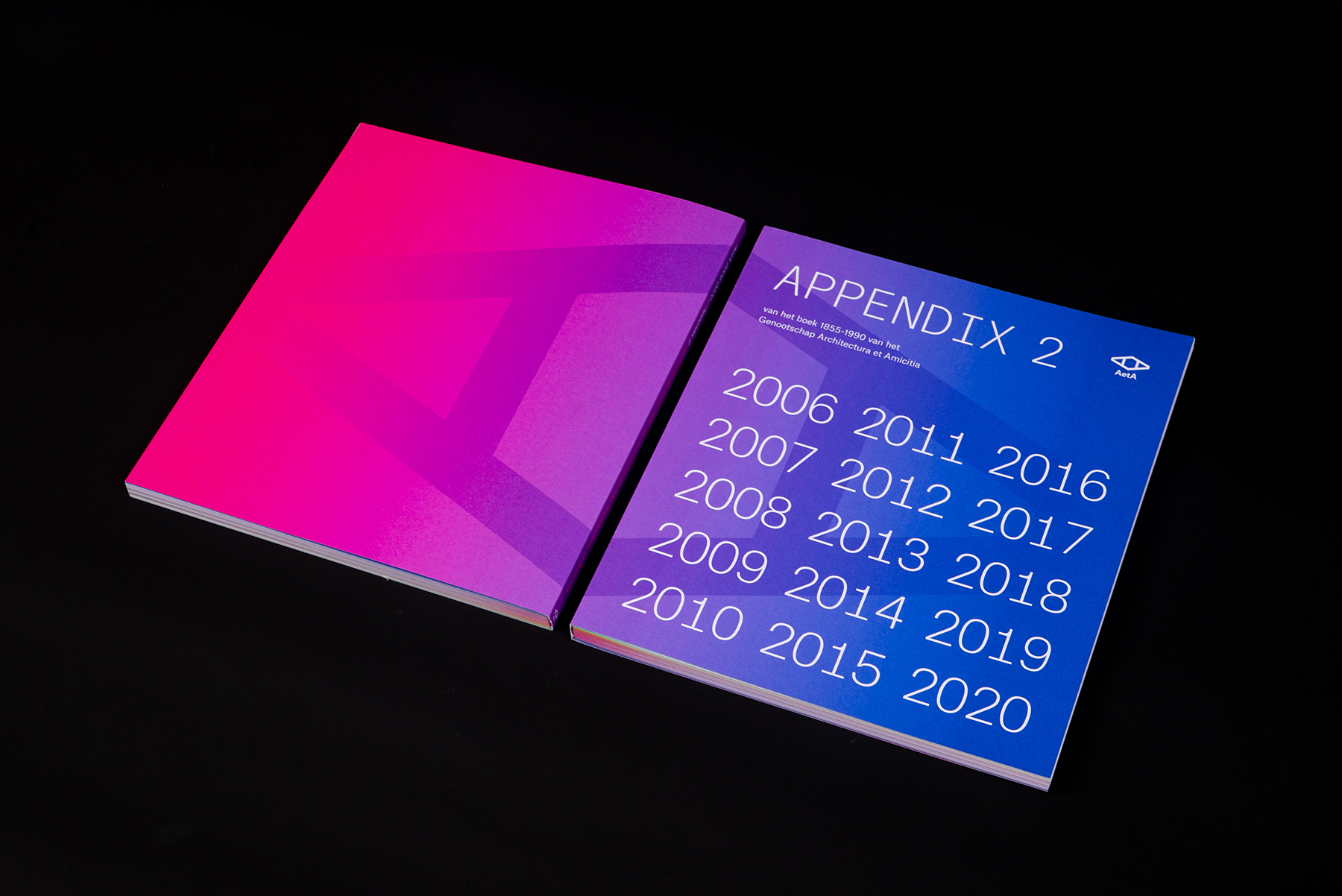AetA
Concept
The first 135 years of existence are recorded in the book ‘Genootschap Architectura et Amicitia 1855-1990’ (1992). The first appendix of this book was published in 2006. In 2021 we created ‘APPENDIX 2 Genootschap Architectura et Amicitia 2006-2020’. To make it a strong series, we used the same size as the first books.
The book is a collection of: reports of activities, organized by AetA for the members, with supporting visual material, portraits of board members drawn by Joost Swarte, covers of published work, interviews with government architects (2006-2020) and a personal essay, written by architect Madeleine Steigenga. The personal essay runs like a thread through the book.
These different parts have been put together chronologically according to the years and divided into four parts. The book shows in word and design that architectural life has high peaks and deep valleys; from economic boom (2006-2007), to crisis and transformation (2008-2012), from recovery and new roles (2013-2019) to insecurity because of Covid 19 and looking forward (2020). These peaks and valleys are literally transformed into the shape of the book, each with a distinct color, which fades from a vibrant color in the middle of the book to a subtle pastel on the rest of the page.
What we made
Just like an architect designs a building and architectural lines are arising in a landscape, the design of the book creates changing compositions of form and color in the book. Next to the fact that the concept fits the course of the story, it also fits with the association – in which the combination of looking and reflecting on architecture plays an important role. When you flip through the book, a changing play of shapes of depth, geometric surfaces and changing colors are passing before your eyes.
Sparkles
The book is printed in full color (CMYK) and 4 pantone inks. Furthermore, 3 of the 5 parts of the inside of the book are cut obliquely, resulting in distinctly varying three-dimensional compositions throughout the book where color and form play together. The book is then bound with a Swiss binding method with fluorine red-orange yarn. Without the exceptional efforts of Bindery Patist and printer Zwaan Lenoir, this special production would not have been possible.





















